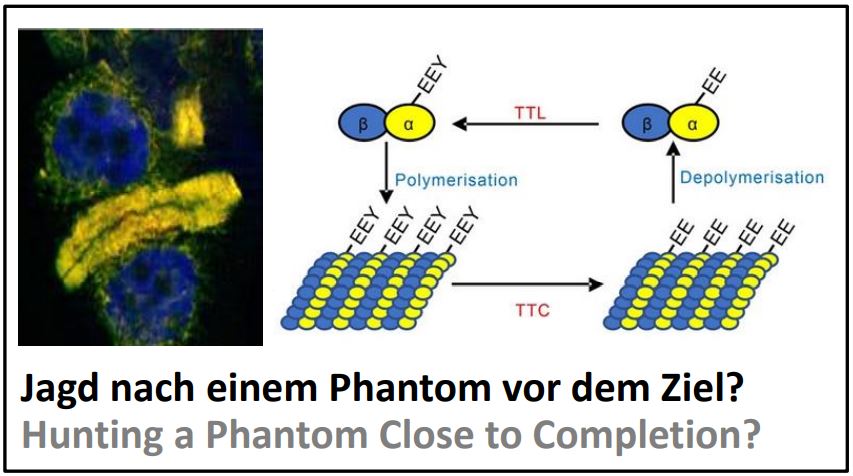2021_03: Ancient Secret of Evolution Solved
 |
What was the question behind this work? One of the building blocks for microtubules, a central element of the cytoskeleton that orients growth and division of plant cells, α-tubulin gets truncated at one end by the enzyme TTC, leading to a shorter version of the protein. The cleaved part, the amino acid tyrosine, can be ligated back through the enzyme TTL. The meaning of this circus is unclear - but since all tubulins from all life forms carry a tyrosine at their end, this phenomenon seems to be important. How did we approach the question? We have now boosted TTL from rice and in tobacco cell using genetic engineering and then searched, how this will change the biology of the plants and cells. Our focus was on growth and development. We also purified and measured both forms of tubulin (with and without the terminal tyrosine) using a procedure developed in our laboratory. What was the result? When the ligase TTL is boosted, this should allow more of the truncated tubulin to be complemented with a tyrosine. We observe just the opposite - there is more and not less of de-tyrosinated tubulin. The enzyme does just the opposite of that what would be expected from a TTL, it behaves like a TTC. On the cellular level this is accompanied by a problem with new cell walls that are inserted tilted and in a wavy manner. This problem during cell division has the consequence that the roots of these transgenic rice plants grow more slowly. Did we find in fact the for three decades elusive phantom of a plant TTC? Publication 163. Zhang K, Durst S, Zhu X, Hohenberger P, Han MJ, An GH, Sahi V, Riemann M, Nick P (2021) A rice tubulin tyrosine ligase‐like 12 protein affects the dynamic and orientation of microtubules. J Int Plant Biol 63, 848-864 - pdf |
